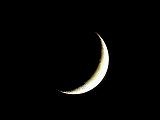 | |
|
Traduko - Angla-Turka - BLEEDING When a knife...Nuna stato Traduko
Tiu teksto haveblas en la sekvaj lingvoj:  
Kategorio Literaturo - Instruado | | | Font-lingvo: Angla
When a knife cuts the skin, the blood begins to escape from the broken blood vessel. After filling the space in the wound, it starts to run out on the surface of the skin. When the blood reaches the air, it begins to form a clot, and bleeding ceases. Within 24 hours, the blood vessels on each side, of the wound begin to develop tiny branches; they rapidly grow and enter the clot that fills the wound. Millions of long thin cells called fibroblasts appear. Their function is to bind the sides of the wound together. The two edges of the skin continue to grow until they meet in the middle and form a scab. When this falls off, the scar tissue can be seen as a purple line, which gradually turns white. This is the scar which in some cases marks the site of the wound for life and which does not have the elasticity of the skin. | | Edited from original (mostly spaces :) When a knife cuts the skin, the blood begins to escape from the broken blood vessel. After filling the space in the wound, it starts to run out on the surface of the skin. When the blood reaches the air, it begins to form a clot, and bleeding ceases. Within 24 hours, the blood vessels on each side, of the wound begin to develop tiny branches; they rapidly grow and enter the clot that fills the wound. Millions of long thin cells called fibroblasts appear. Their function is to bind the sides of the wound together. The two edges of the skin continue to grow until they meet in the middle and form a scab. When this falls off, the scar tissue can be seen as a purple line, which gradually turns white. This is the scar which in some cases marks the site of the wound for life and which does not have the elasticity of the skin. |
|
| KANAMA ,Bir bıçak cildi kestiği zaman, | | Cel-lingvo: Turka
Bir bıçak cildi kestiği zaman, kan kesik damardan sızmaya başlar. Yaradaki boşluğu doldurduktan sonra, cildin yüzeyine akmaya başlar. Kan havayla temas ettiğinde, pıhtı ve kanama durdurucularını oluşturmaya başlar. 24 saat içinde, yaranın herbir tarafındaki kan damarları ince dallar oluşturmaya başlarlar; çabucak büyür ve yarayı dolduran pıhtının içine girerler. Fibroblast olarak adlandırılan milyonlarca uzun ince hücre ortaya çıkar. Onların görevi yaranın kenarlarını birleştirmektir. Cildin iki kenarı ortada birleşene ve kabuk oluşturana kadar büyümeye devam ederler. Bu kabuk döküldüğünde,yara izi dokuları, gitgide beyaza dönen mor bir çizgi şeklinde görülebilirler. Bu bazı vakalarda yara bölgesini hayat boyu belli eden ve cilt esnekliği bulunmayan yara izidir. | | |
|
Laste validigita aŭ redaktita de handyy - 19 Marto 2008 17:32
Lasta Afiŝo | | | | |
13 Marto 2008 19:27 | | | 'bleeding ceases' için 'kan durdurucuları'ndan ziyade daha iyi bir ifade için fikri olan var mı?? | | |
13 Marto 2008 19:56 | | 
kfetoNombro da afiŝoj: 953 | Ankarahastanesi excellent translation.
only a detail remains
"When this falls off" "Bu kabuk döküldügünde"
@handyy "pıhtı oluşturmaya başlar ve kanama sona erer." | | |
14 Marto 2008 00:01 | | | Ankarahastanesi excellent translation.
Tebrikler. | | |
17 Marto 2008 16:29 | | | This is an amazing translation - tebrik ederim!!!
The only suggestions I have are the same as those made by kfeto above.
Is "fibroblast" the same in Turkish? | | |
17 Marto 2008 21:02 | | | "When this falls off" :"Bu kabuk döküldügünde" is an important correction,thank you kfeto,'fibroblast'is the same in Turkish.
|
|
| |
|

